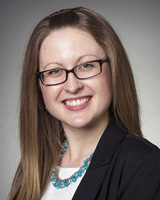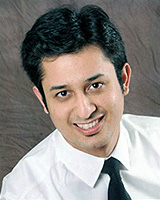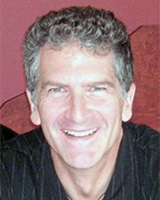full article:
In 2014, the National Physician Survey found that 12.8% of Alberta family physicians and 15.5% of Canadian family physicians served patients in rural and remote settings1. This contrasts with 17% of Albertans and 19% of Canadians who live rurally2. The deficit of physicians practicing in rural Canada has resulted in reduced access to healthcare services at these locations3. Strategies have therefore been developed to support the recruitment and retention of physicians to rural sites. These primarily have been financial incentives such as debt repayment assistance programs or direct practice support in the form of subsidized overheads4,5.. Because less than one quarter of family physicians practice in rural and remote areas, it is important to expand the understanding of the factors that draw physicians to smaller communities and, equally as important, what enhances retention.
There is a robust body of literature studying the recruitment and retention of rural physicians in Canada3,6-8. In these studies medical students and family medicine residents have identified their spouses as being one of their top three career influences9-11. Similarly, spousal satisfaction is a major factor influencing retention of practicing rural physicians12. Spousal influence on career choice is not unique to family medicine; a study of Wisconsin surgery graduates in 2009 found spousal concerns to be one of the top two factors influencing graduates to pursue a rural surgical practice13. Further, Helland et al found that, of 164 American emergency medicine graduates practicing in urban areas, the top factor that would have influenced them to pursue a rural practice was a spousal/family connection14. In 2012 a study by Mathews et al demonstrated that family influence was the primary consideration of Saskatchewan and Newfoundland and Labrador medical graduates between 1965 and 199515.
While physicians in numerous studies have identified their spouse as a potential barrier to rural practice, to the authors' knowledge there is less published literature that specifically explores rural practice from the spouse's perspective9,16,17. In one study, Mayo and Mathews interviewed 13 rural spouses in Eastern Canada to identify factors that directly influenced their contentment at a rural location. They identified employment opportunities, having a rural background, experience in rural communities, proximity to family and friends, and the role of children as the most important factors affecting spousal contentment18. However, this study did not examine how the spouse was involved in the decision to pursue a rural lifestyle, or how the spouse may influence the decision to stay in the community19. The authors of the present study were unable to access any government research on workforce planning initiatives.
The primary goal of this study was to gain a better understanding of how physicians and their spouses influence each other in choosing and maintaining a rural practice and, consequently, a rural lifestyle. Early findings of this study could inform policy decisions for rural physician recruitment and retention efforts by governments and rural communities across Canada.
The physician population for this study consisted of doctors practicing in rural southern Alberta with clinical appointments in the Department of Family Medicine, Cumming School of Medicine (CSM), University of Calgary. This population was chosen because they have regular contact with the CSM and contacting them for the purposes of conducting research was logistically convenient. Physicians in this study practice at sites ranging in population from less than 10 000 to 90 000. Participants were recruited via an email invitation from the Distributed Learning and Rural Initiatives (DLRI) office. Physicians were invited to complete an online survey hosted by FluidSurveys. The survey collected information regarding physician demographics as well as the location of meeting the current partner, location of high school education, institution of undergraduate medical education, year of completing undergraduate medical education, location of residency training, year of residency completion, year of licensure, years practicing at their current location, overall professional/personal satisfaction with practicing in their current location, time frame of intending to stay at their current site, and the influence of their spouse on the decision to practice at their current location.
The email invitation also contained a link to the second survey specific to the physician spouse or partner, asking a similar panel of questions. Physicians were asked to request their spouse or partner to complete this survey. At the end of each survey the individuals were invited to participate in the interview phase of the study. Those who consented were contacted for interviews. Semi-structured interviews were conducted by an experienced interviewer and transcribed. The interviewer was independent of the analysts and the DLRI. Duration of each of the 11 interviews was approximately 1 hour.
Descriptive statistical analysis of the survey data was carried out with STATA v12.1 (http://www.stata.com). Thematic analysis of the qualitative interview data was conducted by three members of the research team using an iterative, constant comparative approach. One analyst worked as research staff at the DLRI and two analysts were undergraduate medical students at the CSM.
Ethics approval
Ethics approval for this study was provided by the University of Calgary Research Ethics Board, REB13-1145.
In this study, 84 physicians met the criteria for inclusion. Thirty-one physicians and 22 physician spouses completed the online survey, for a physician response rate of 37%. Spousal response rate cannot be calculated, as the authors did not track how many physicians in the inclusion group invited their spouses to take part in the study. Twenty-three (74%) physicians were Canadian medical graduates (CMGs) and eight physicians were international medical graduates (IMGs; 26%). Among participating spouses, 18 (82%) were married to a CMG and four (18%) were married to an IMG. Among those who completed the survey, six (19%) physicians and five (23%) physician spouses participated in the interview phase. Physician ages ranged from 28 to 73 years, with a mean age of 46 years. The results were similar for the physician spouses, whose ages ranged from 32 to 71 years, with a mean age of 46 years. All physicians who responded to the survey in the study were either married or considered themselves to be in common law relationships. Approximately half of the physicians and spouses graduated from a rural high school either in Canada or abroad. The length of practice by the physicians at their current location ranged from less than 1 year to more than 40 years, with an average practice duration of 15 years. Participant demographics are summarized in Table 1.
Twenty-one (68%) of physicians reported that their spouse was either 'very supportive' or 'somewhat supportive' of their decision to practice rurally. This trend was similar between both CMG physicians (15, 66%), and IMG physicians (6, 75%) (Fig1). Amongst the physician spouses, 13 (59%) were employed in the town where they lived, and seven (32%) reported that living rurally impacted their careers. From spousal interviews and survey open-ended comments, it is inferred that this was a negative career impact, but this was not objectively characterized. Fifteen (68%) spouses reported that their decision to live in the current rural community was at least somewhat, if not completely, dependent on their physician spouse's career. Amongst CMG spouses, 12 out 18 (66%) were somewhat or completely dependent on their physician spouse's career for living rurally (Fig2). Similarly, six out of eight (75%) IMG physician spouses identified their decision to live rurally was either somewhat or completely dependent on their physician spouse's career.
Overall, physicians and spouses reported that they were personally and professionally satisfied in their current community of residence. Twenty-seven (87%) physicians reported they were satisfied or very satisfied, as did 17 (77%) physician spouses. Satisfaction was high amongst both CMG and IMG physicians, with 21 (91%) of CMG physicians and 6 (75%) of IMG physicians reporting they were overall satisfied or very satisfied (Fig3). However, there was a more substantial difference in satisfaction between CMG and IMG spouses. Only two (50%) of IMG spouses were satisfied or very satisfied, as compared to 15 (83%) of CMG spouses. Twenty-nine (94%) physicians and 19 (86%) spouses indicated that they considered themselves to be engaged as part of their community. This satisfaction is reflected in the question on retention, as only five (16%) physicians reported to be planning to leave their current community in the next 2 years.
Eleven participants were interviewed: four CMG physicians, two IMG physicians, three CMG spouses and two IMG spouses. The qualitative results of the study are organized into three sections. The first and second sections present the personal experiences of rural recruitment and rural retention. The third section presents recommendations made by physicians and spouses to improve these processes. Each section has specific themes that were derived based on the thematic analysis of qualitative data. Specific interview quotes that led the authors to derive these themes are referenced in tabular form along with the text.
Table 1: Participant demographics

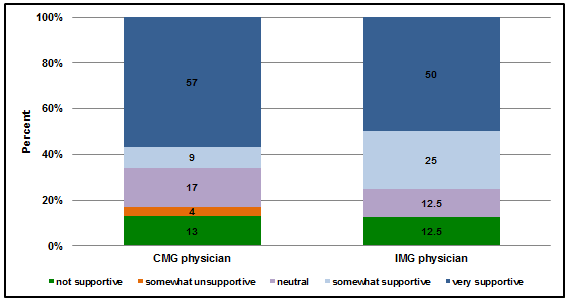
Figure 1: Physician-reported support of their spouse on the decision to practice at a rural location. Canadian medical graduate (CMG) physicians n=23, international medical graduate (IMG) physicians n=8.
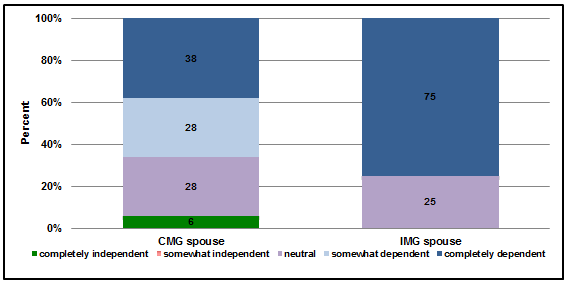
Figure 2: Degree of influence of physician on the spouse's choice to live rurally. 'Completely independent' identifies spouses who were interested in living in their current community regardless of their partner's career. 'Completely dependent' identifies spouses who were only interested in living in their current community as a result of the physician's career. Canadian medical graduate (CMG) spouse n=18, international medical graduate (IMG) spouse n=4.
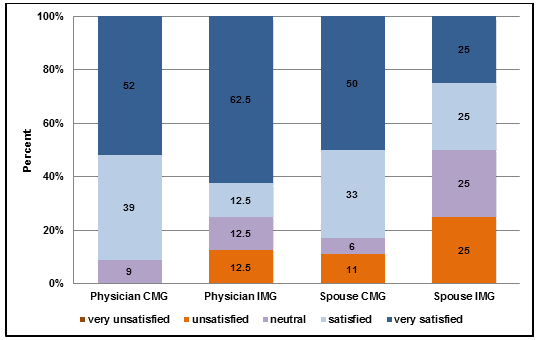
Figure 3: Physician and spouse personal and professional satisfaction living in their current community. Canadian medical graduate (CMG) physician n=23, Canadian medical graduate (CMG) spouse n=18, international medical graduate (IMG) physician n=8, international medical graduate (IMG) spouse n=4.
1. Rural recruitment of physician and spouse
Nature of rural practice: When addressing recruitment factors, a recurring theme among both CMG and IMG physicians was the attraction to communities providing a broad scope of practice.
Interviewee 11, a CMG physician, commented on this:
I liked everything; I liked delivering babies; I liked working the Emergency Room; I liked taking care of patients in the clinic or hospital and wasn't really willing to give up any of that. And so Rural Medicine became, you know, the way to go.
All four CMG physician interviewees stated that working within a collegial medical group was important for them (interviewees 4, 6, 9 and 11).
For example, interviewee 4 stated,
[an attractive factor was a] very welcoming nursing community and general paramedical community... so I was able to grow in [a supportive] environment.
Three CMG physicians and one IMG physician stated that the proximity of the location for work and personal lives in a rural environment was a positive factor when deciding to pursue rural medicine (interviewee 4, 5, 6 and 9).
Interviewee 4, a CMG physician, commented on this, stating:
... I was able to often take my pager with me and still be involved in activities because it only took me two minutes to get to the hospital.
Two CMG physicians were drawn to larger rural communities specifically for secondary specialist support (interviewees 6 and 9). One IMG physician commented that rural sites with an affiliation to an academic center are a specific attracting factor (interviewee 5).
Raising a family in a rural environment: A theme common to all physicians and spouses was the impact of their family on their practice location decision. Recurrent factors deemed important included safety of the community, a strong education system for children, access to recreational activities and proximity to an urban center (interviewees 3, 5, 9 and 11).
Interviewee 5, an IMG physician, commented on differences in living rurally versus in an urban center:
... living [in a rural community was] isolating for my kids ... They just couldn't run down the street and play with the neighbours' kids, which we did have when we moved to ... [urban center] ... I would say the biggest obstacle is really accessible to good schools, especially for young families.
Interviewee 6, a CMG physician, was specifically drawn to a community that supported her decision to raise a family:
My colleagues were very good about letting me put limits on my call schedule as I got further advanced in my pregnancy ... letting me work part-time and trying to parent and work. ... I felt no pressure from my colleagues in order to take time to have a family. ...
One CMG physician, one IMG physician and one IMG physician spouse commented on the lack of cultural opportunities as a drawback to rural living (interviewees 3, 4 and 8). Both spouses of IMG physicians commented on the lack of access to networking and professional development opportunities (interviewees 2 and 8).
For example, Interviewee 2 commented:
... I find that [the common townspeople] are not professional people, so they're just working in restaurants ... or doing just paperwork ... so now [the biggest challenge is] find[ing] people to network with in order to be recommended in the professional positions.
IMG spouses were also generally less satisfied with their communities as compared to CMG spouses.
Approach to decision making: For most physicians and spouses, the decision to relocate to their current community was mutual. CMG physicians commonly selected their current location based on their preference from prior locum experience.
Interviewee 11, a CMG physician, commented on the lengthy locum period while finding a suitable long-term living location:
I locumed a lot of places. I probably worked in about 30 different places in my locuming career and we had it narrowed to about four different communities ...
In contrast, IMG physicians coming to Canada on a work permit are not permitted the same latitude in selection, as the decision to live at their current location was dominated by site availability or by their employment contract (interviewees 3 and 5).
Interviewee 2, the spouse of an IMG physician, commented on the limited availability of communities when re-locating to Canada:
... we didn't choose it per se ... the agent sent the CV for my wife to [a rural town] and the [town] Committee accepted. ...
2. Rural retention of physician and spouse
Importance of finding spousal employment/having spousal fulfillment: All physicians and spouses interviewed commented on the importance of accommodating spousal employment as key to rural retention of the physician.
Interviewee 11, a CMG physician, commented:
You know, the guys that I saw that were the happiest and most well-adjusted in the rural communities were the ones where their partners have .., gainful employment. ... that was very much in the forefront of my mind.
Likewise, interviewee 9, another CMG physician, discussed the challenges of factoring in spousal concerns when recruiting physicians:
I do the recruiting and it's really impacted who you can recruit because sometimes you have this individual who's interested [in working in a rural location] ... But then what can the spouse do, right?
This seemed to be easier for CMG families as they often chose their current location based on availability of both physician and spousal employment/fulfillment opportunities. In contrast, IMG families move to a location mandated in the employment contract of the physician. Often these locations do not equate to spousal employment opportunities.
Interviewee 3, an IMG physician, discussed the challenges of balancing physician and spousal employment:
... it's not that difficult for me to find a job but it is for my husband so the reason that we came here is because it seems central ... He has a good radius whereas in other rural places [potential job sites] we're three hours [away] ...
Two interviewed spouses pursued higher education through distance learning and one CMG physician mentioned that their spouse pursued post-secondary education via commuting to an urban center (interviewees 1 and 8). Furthermore, this physician stated that their spouse's career flexibility was key in their decision to move and stay rural.
Contentment: All physicians interviewed were content in their current practice location. They attributed their satisfaction to the nature of their practice and a supportive spouse who had adapted to the demands of a rural practice.
Interviewee 6, a CMG physician, discussed her supportive spouse as a key factor in staying at their rural community:
... there is no doubt that my career is a burden at times to our family life ... in terms of answering phone calls from the hospital even if it's the weekend or after hours ... [my husband is] remarkably understanding.
Community engagement of spouses was a recurrent theme relating to spousal contentment. Both spouses of IMG physicians described increased difficulty in integrating into the community due to cultural differences and a desire to have access to peers in more highly educated or professional social circles.
For example, interviewee 8 commented on the challenges of integrating into a rural Canadian community:
It's just different, you know. What, culturally what we view as integration is different than the Canadians' model of integration. I think that's where the biggest difference is ... They will probably say, 'We did everything to integrate them. We took them cookies every week. You know, we did this or we did that', you know. They didn't do anything because my view of ... integration is different from ... their view. But now that we are Canadian, as to when I look back, they were very welcoming and very loving but at the time you don't see it.
Challenge of privacy: The challenge of privacy was common to both spouses and physicians. Spouses were mixed in their opinions on reduced privacy being a negative versus neutral factor in living rurally. Physicians overall struggled more with this issue.
Interviewees 9 and 11, both CMG physicians, illustrate the variance of views on privacy in rural living:
'... that 6-foot fence ... was deliberately built so we could spend time with our family without people watching us' versus '... for the very small inconveniences [of decreased privacy], what you get out of living in a small town is immeasurably greater'.
A mix of three CMG and IMG physicians mentioned the challenge of dual relationships (professional and personal) in smaller communities.
For example, interviewee 5, an IMG physician, commented on the challenges of developing friendships in a rural community:
Being a physician in a small town is, of course, a little bit of a hindrance because most of the people that you meet socially in that same town won't be people that you would have connected with in a professional way as well ... because you know them on very intimate or emotional or physical grounds.
3. Suggested strategies for future recruitment/retention efforts
Physician self-directed recruitment/retention strategies: Two themes were recurrent among CMG physicians and their spouses. First, personal exploration of potential communities through locum work broadened the scope of opportunities and allowed the couple to establish a baseline of what was required for them and their families. Second, these broader experiences allowed the selection of a community where their family would be satisfied both professionally and recreationally.
Interviewee 6, a CMG physician, emphasized the importance of having access to recreational activities near the place of one's residence:
... work can be all encompassing ... [so] it's important to enjoy life outside of the profession and be in a location where they can do that.
Interviewee 4, also a CMG physician, commented on being proactive in regards to continuing medical education (CME) as a way to overcome the isolation of living in a smaller center:
... [one should employ the] strategy of not withdrawing towards specialists but rather making, taking a more proactive approach and participating in leadership courses and academic CME courses in local, in nearby urban centers.
IMG physicians and their spouses emphasized the importance of exploring spousal employment opportunities before choosing a location to practice/reside before arriving in Canada.
For example, interviewee 2, an IMG physician, commented on the importance of having a job for both partners before accepting a contract:
Once [a rural physician] has accepted the offer ... you cannot just up and move ... I would advise them to find a job for the spouse before they move to that rural area.
Community- and institution-directed recruitment/retention strategies: Three CMG physicians discussed the importance of changing the medical education model and its current practices (interviewees 4, 9 and 11). They reiterated the need to increase rural exposure for medical students and residents to aid in recruitment efforts. Interviewee 4 discussed the skewed perception medical students may have of rural medicine:
[medical students] are all surprised when they come here ... how much medicine that we do, how much good medicine that we do ... because [in medical school] they are taught that we've got nothing. They don't even know that we can do STAT bloodwork so it's absolutely amazing the negative influence the medical school has ...
He suggested that, to overcome this misperception:
... there's an onus on behalf of the medical schools to be a little bit more generalist-taught and less specialist-taught ... we teach a whole bunch of kids now that don't actually live up to their scope of practice ...
The timing of recruitment by the community was a second strategy brought forth by two interviewed participants. This was discussed in strategic terms such as recruitment in anticipation of a retiring physician or in response to a clinical need, such as recruitment of a physician with women's health skills in anticipation of a growing community (interviewees 4 and 7).
As discussed by interviewee 4, a CMG physician:
... [communities must identify that] critical time in a rural community's lifespan [when] you need [to] transfer care from older physicians to younger physicians.
Interviewee 5, an IMG physician, suggested communities could be more proactive in assisting with community integration:
I think signing bonuses and ongoing financial support until physicians settle are really good but I think it would also be good to, for some people to show to new physicians in a new town what there is to do church-wise, sports-wise, school-wise and to keep [in mind new physicians'] interest fields, to keep stimulating [them] to participate.
Two CMG and two IMG physicians suggested communities could provide assistance by sourcing spousal employment before a physician signs a contract (interviewees 3, 4, 5 and 11). Further, one CMG and one IMG physician discussed overall 'fit' or alignment of personal culture and skill set with that in the community or practice as an important factor for both parties to consider in recruitment and retention efforts (interviewees 3 and 4).
For example, interviewee 3, an IMG physician, commented on overall goodness of fit for physicians and their communities:
... if my mind is made up that I'm living in [a rural location], I don't think anyone can change that directly. No one can change my mind if I'm saying, 'You know what? I'm just here for a couple years and I'll be out of here'.
Discussion
The recruitment and retention of physicians at rural and remote sites is a complex process influenced by a variety of social and professional factors. Among these, one of the most important identified factors is the influence of the physician spouse20-22. While the importance of the spouse has been widely demonstrated, few studies have explicitly explored rural practice recruitment and retention from the spouses' perspective. The majority of physicians and spouses in the present study were personally and professionally satisfied in their current rural practice location and considered themselves to be engaged as part of the community. Nevertheless, the majority of spouses did acknowledge that their decision to live rurally was primarily motivated by the physician's career. For CMGs, the couple appeared to approach the decision jointly and place their priorities on desired lifestyle, environment for raising children, and each other's role in the family. A common trend amongst CMGs was that both the physician and their spouse were very aware of the benefits and drawbacks of living rurally.
For the IMGs in this study, the decision to practice rurally was based on a decision to immigrate to Canada. It was evident that the decision to immigrate to Canada was made jointly by the couple. However, the choice of practice location upon immigration was limited by availability of contracts at rural locations. Spouses of IMG physicians commented on the isolation of rural communities and frequently commented on unanticipated circumstances. These circumstances included the lack of job opportunities, difficulty in accessing higher education, and a lack of social and cultural experiences. Owing to these circumstances, the spouses appear to have a substantial influence on rural physician retention. To mitigate some of these frustrations, the IMG physician spouses made use of telecommuting, online education resources and social media to connect easily with friends and family in their communities of origin. An opportunity exists to create a cultural awareness in all parties; a richness of diversity could be created at the same time as a supportive environment if cultural expectations are made explicit.
While there was a noticeable split in the thematic analysis regarding the spouses of CMGs compared to IMGs, there was more congruence in the physician group. Both CMG and IMG physicians were very satisfied with their practices. This further emphasizes the social aspect of recruitment and retention rather than the professional aspect. Many physicians described how they were able to flexibly integrate their work-life balance. It appears that it is not the scope of practice that is a factor in retention of physicians, but the social impact on the spouse that is more significant.
One consistent suggestion for a refocused rural recruitment strategy raised by the rural physicians was a need for greater academic and CME support. This support may not only help improve the confidence of physicians and thereby increase quality of patient care, but also proactively respond to the anxiety of early practice and have an impact on the success of new rural physician recruitment. Both physicians and spouses described the importance of finding a good 'fit' or alignment of personal community culture and skill set between the physician and the community. Alternately, from the perspective of a physician being recruited, touring a variety of sites and arriving at a joint informed decision by the physician and their spouse would ensure that same 'fit'.
A recurring suggestion was the creation of a centralized database of rural medical practice opportunities. The database should include detailed information on particular skill sets needed at each site, links to potential jobs for spouses, links to schools and recreational information, and community demographics. A particularly interesting suggestion was to enhance the role of the governing bodies in supporting the physician spouse. As initiatives already exist to recruit physicians to rural sites3,5,6, it is interesting to note that these study participants indicated the programs in existence were insufficient. Part of a recruitment strategy could include partnerships with private industry to support jobs accessible to the physician spouse.
While this study does provide some insight into the complex role of the physicians spouse in choosing and maintaining a rural practice, there are several important limitations. Notably, the overall sample size is very small and limited to a specific region of southern Alberta, Canada. For logistical convenience, the cohort was also limited to physicians with clinical appointments at the University of Calgary, indicating that this group does have some external academic involvement and may not be representative of the general rural practicing physicians in southern Alberta. At this time, the authors cannot speculate how this group's views would differ from the general physician population.
The results of this investigation add to the existing literature by refining and increasing understanding of the perspective of the physician spouse. This study raises the voice and profile of the spouse in the important work for rural recruitment and retention. It also demonstrates an important distinction between the recruitment and retention of CMGs when compared to IMGs. Considerations to accommodate the educational, professional and cultural needs of the physician spouse must be highlighted in policy if large areas of underserved rural communities continue to rely on international recruitment. In this study, the spouses of CMGs were a positive influence in rural recruitment and retention, whereas IMG spouses were generally less supportive of pursuing a rural lifestyle. Leveraging new technologies to provide online access to education, jobs and connection to family and friends may offer a solution to some of the challenges faced by spouses of physicians that practice medicine rurally.
References
1. The College of Family Physicians of Canada, Canadian Medical Association, The Royal College of Physicians and Surgeons of Canada. National Physician Survey, Canada, 2015. (Internet) 2014. Available: http://nationalphysiciansurvey.ca/wp-content/uploads/2014/09/2014-FPGP-EN-Q5ii.pdf (Accessed September 2014).
2. Statistics Canada. Population, urban and rural, by province and territory (Canada). (Internet) 2011. Available: http://www.statcan.gc.ca/tables-tableaux/sum-som/l01/cst01/demo62a-eng.htm (Accessed 4 February 2011).
3. Rourke J. Strategies to increase the enrolment of students of rural origin in medical school: recommendations from the Society of Rural Physicians of Canada. Canadian Medical Association Journal 2005; 172(1): 62-65.
4. Pathman DE, Konrad TR, King TS, Spaulding C, Taylor DH. Medical training debt and service commitments: the rural consequences. Journal of Rural Health 2000; 16(3): 264-272.
5. Pathman DE, Konrad TR, King TS, Taylor DH, Jr, Koch GG. Outcomes of states' scholarship, loan repayment, and related programs for physicians. Medical Care 2004; 42(6): 560-568.
6. Wilson DR, Woodhead SC, Moores DG. Alberta's Rural Physician Action Plan: an integrated approach to education, recruitment and retention. Canadian Medical Association Journal 1998; 158(3): 351-355.
7. Curran V, Rourke J. The role of medical education in the recruitment and retention of rural physicians. Medical Teacher 2004; 26(3): 265-272.
8. Rourke JT. Politics of rural health care: recruitment and retention of physicians. Canadian Medical Association Journal 1993; 148(8): 1281.
9. Szafran O, Crutcher RA, Chaytors RG. Location of family medicine graduates' practices. What factors influence Albertans' choices? Canadian Family Physician 2001; 47(11): 2279-2285.
10. Lu DJ, Hakes J, Bai M, Tolhurst H, Dickinson JA. Rural intentions. Factors affecting the career choices of family medicine graduates. Canadian Family Physician 2008; 54(7): 1016-1017.
11. Jutzi L, Vogt K, Drever E, Nisker J. Recruiting medical students to rural practice. Perspectives of medical students and rural recruiters. Canadian Family Physician 2009; 55(1): 72-73.
12. Wasko K, Jenkins J, Meili R. Medical practice in rural Saskatchewan: factors in physician recruitment and retention. Canadian Journal of Rural Medicine 2013; 19(3): 93-98.
13. Jarman BT, Cogbill TH, Mathiason MA, O'Heron CT, Foley EF, Martin RF, et al. Factors correlated with surgery resident choice to practice general surgery in a rural area. Journal of Surgical Education 2009; 66(6): 319-324.
14. Helland LC, Westfall JM, Camargo CA, Rogers J, Ginde AA. Motivations and barriers for recruitment of new emergency medicine residency graduates to rural emergency departments. Annals of Emergency Medicine 2010; 56(6): 668-673.
15. Mathews M, Seguin M, Chowdhury N, Card RT, Chowdhury MMMSN, Card R. Generational differences in factors influencing physicians to choose a work location. Rural Remote Health (Internet) 2012; 12: 1864. Available: www.rrh.org.au (Accessed 27 January 2012).
16. Kazanjian A, Pagliccia N. Key factors in physicians' choice of practice location: findings from a survey of practitioners and their spouses. Health & Place 1996; 2(1): 27-34.
17. Cameron PJ, Este DC, Worthington CA. Professional, personal and community: 3 domains of physician retention in rural communities. Canadian Journal of Rural Medicine 2012; 17(2): 47.
18. Mayo E, Mathews M. Spousal perspectives on factors influencing recruitment and retention of rural family physicians. Canadian Journal of Rural Medicine 2006; 11(4): 271-276.
19. Rodnick JE. Categorizing spouses' thoughts about rural practice. Family Medicine 2007; 39(8): 592-593.
20. Butterworth K, Hayes B, Neupane B. Retention of general practitioners in rural Nepal: a qualitative study. Australian Journal of Rural Health 2008; 16(4): 201-206.
21. Cutchin MP, Norton JC, Quan MM, Bolt D, Hughes S, Lindeman B. To stay or not to stay: issues in rural primary care physician retention in Eastern Kentucky. Journal of Rural Health 1994; 10(4): 273-278.
22. Fraser C. Physician-community integration: a case study of practitioner experiences and retention challenges on British Columbia's Haida Gwaii/Queen Charlotte Islands. PhD thesis. Kingston, ON: Queen's University, 2009.
